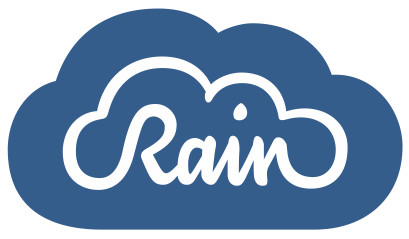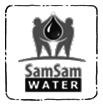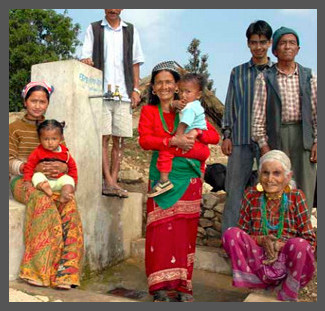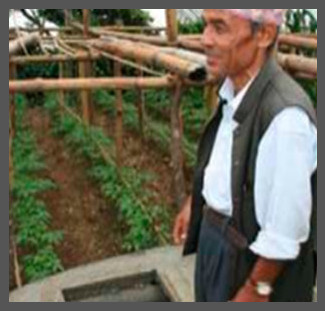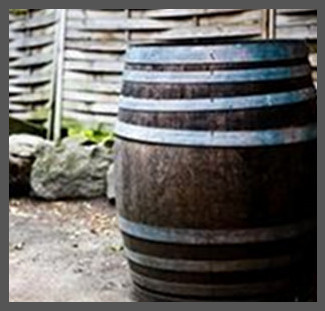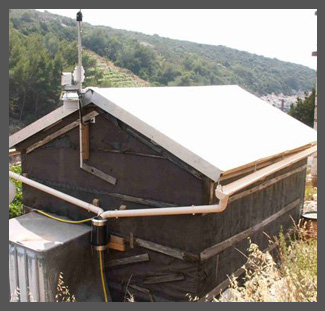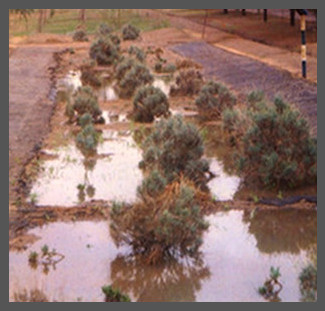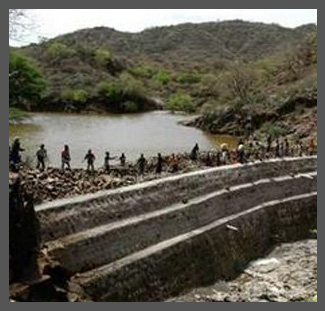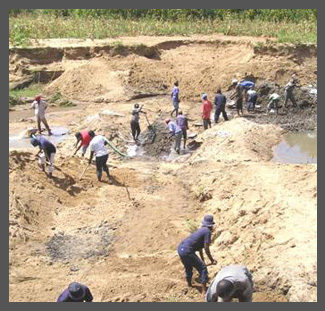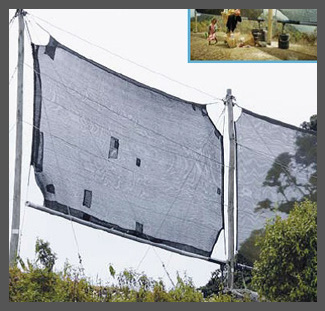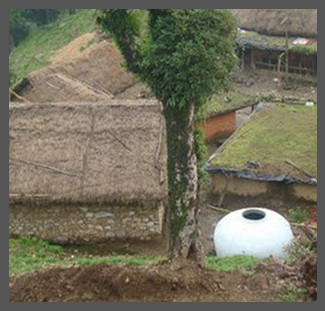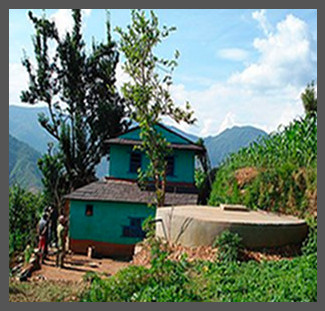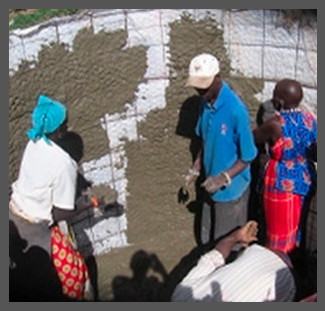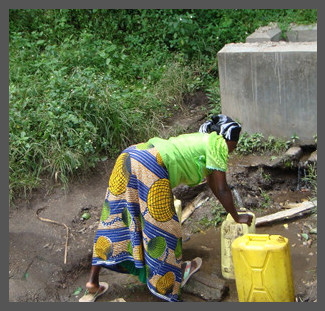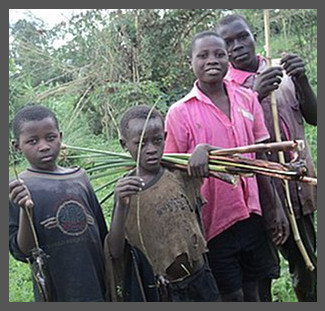மழைநீர் சேகரிப்பு
( Article on Rainwater Harvesting in Tamil Language of India)
மழைநீர் சேகரிப்பு என்பது மழைநீர் தரை மட்டத்தில் ஓடி வீணாவதற்கு முன்னதாகவே சேகரித்து அதை கொள்கலன்களில் ஒருங்கே குவித்து வைப்பதாகும். மழைநீரை பூமிக்கடியில் உள்ள பாறைகள் உறிஞ்சுவதற்கு முன்னதாகவே சேகரிப்பதால் அதை பிறகு குடிநீர் தேவைகளுக்கும், கால்நடைகளுக்கும் மட்டும் அல்லாமல் நீர்ப்பாசனத்திற்கும் பயன்படுத்த முடியும். கட்டிடங்களின் மேற்கூரைகளில் இருந்தே மழைநீரை சேகரிப்பது ஒரு முறை ஆகும். புல் மற்றும் இலைகள் தவிர உலோகத் தகடுகள் மற்றும் பிளாஸ்டிக் பொருட்களை பயன்படுத்தி மழைநீர் ஓடுவதை தடுத்து நிறுத்தி சேகரிப்பது வழக்கம்.
Contents
மழைநீர் சேகரிப்பு - இந்தியா
மழைநீர் சேகரிப்பு கட்டாயமாக்கிய முதல் இந்திய மாநிலம் தமிழ்நாடு மாநிலம். சென்னை நகரின் பல்வேறு பகுதிகளில் 50,000 மழைநீர் சேகரிப்பு அமைப்புக்கள் நிறுவப்போவதாக சென்னை நகர மேயர் 2014 மே 30-ம் தேதி அறிவித்தார். [1]
மழைநீர் சேகரிப்பை கடைப்பிடிப்பது இந்த மூன்று கேள்விகளுக்கு பதில் அளிக்கிறது.:
என்ன: மழைநீர் சேகரிப்பு வாட்டர் சப்ளை, உணவு உற்பத்தி மற்றும் உணவு பாதுகாப்பை மேம்படுத்தும்.
யார்: உள்ளூர் பகுதிகளில் வசிக்கும் மக்களுக்கு மழைநீர் சேகரிப்பு பெருமளவு உதவியாக இருக்கும்.
எப்படி: மழைநீர் சேகரிப்பின் மூலம் நீர் விநியோகம் மற்றும் உணவு பாதுகாப்பு மேம்படும், அது வருவாய் ஈட்டுவதற்கு வழி வகுக்கும்.
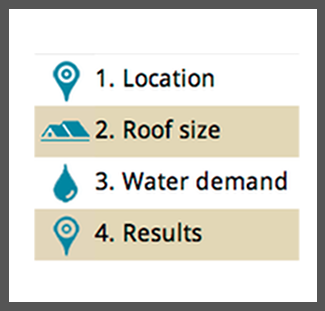
| ||||
Retention & Reuse) |
Micro-financing |
|||
3R and MUS |
Clearwater Revival |
||||
Rainwater harvesting links
- Pluvia: ENERGY # “PLUVIA” :: RAIN USED TO ILLUMINATE LOW INCOME HOMES (MEXICO, 2014)
- Water Towers: Check Out These Amazing Towers In Ethiopia That Harvest Clean Water From Thin Air
- Groasis waterboxx: Using 1 liter of water instead of 10!
- bob® bag: bob® gives customers access to clean water.
- Rainwater pillow: The Original Rainwater Pillow is an innovative rainwater & storm water harvesting system designed to be stored in horizontal wasted space.
- Rainsoucer: Made in the U.S.A., the patent pending RainSaucer™ is a rain barrel accessory that allows you to harvest rainwater...
Field experiences
These projects are utilizing rainwater harvesting techniques and are part of the project listing in Really Simple Reporting (RSR) on Akvo.org.
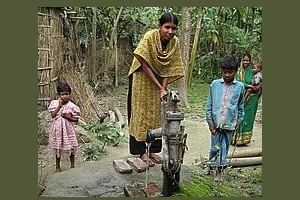 WASH program in Rural Bangladesh |
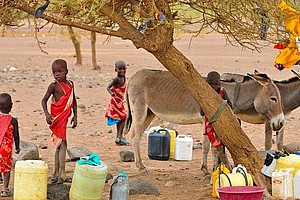 Scale up of Sustainable Water Access |
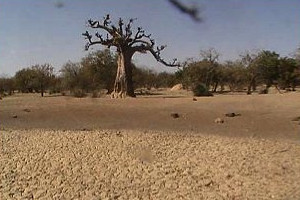 Etude technique d’avant-projet |
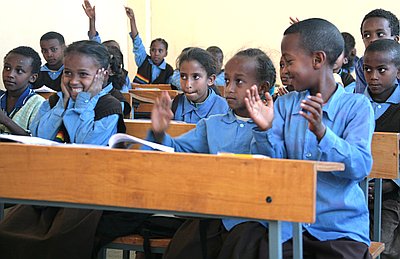 Rainwater harvesting for Nicolas School |
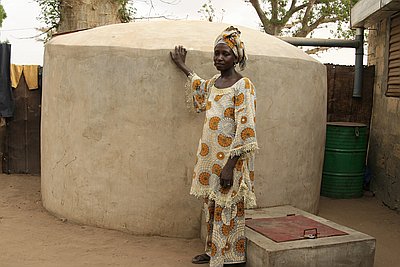 Safe water supply for Fayaco, Senegal | ||
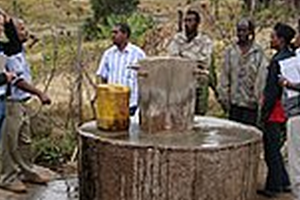 Rainwater Harvesting Capacity Center |
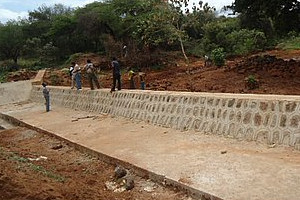 Support on WASH - in Miyo woreda |
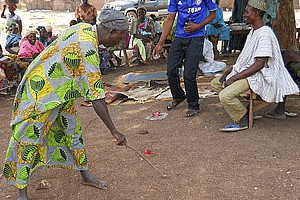 Upscaling CLTS for Healthy Communities |
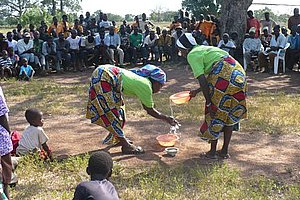 Partnership in WASH services delivery |
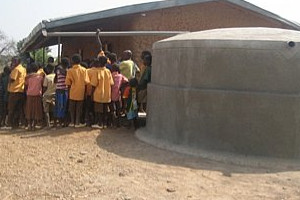 Northern Region WASH Programme | ||
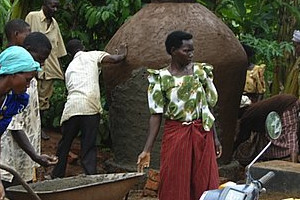 Raising awareness on rainwater harvesting |
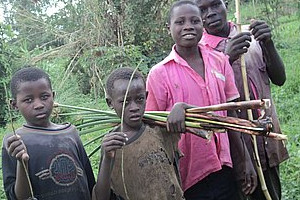 Wetland Management & Water Harvesting |
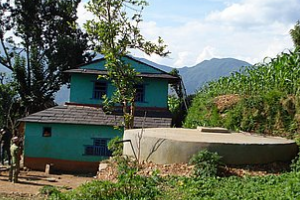 Rain Water Harvesting in Nepal |
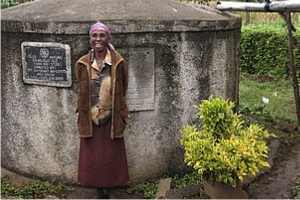 Rainwater Harvesting in Kenya |
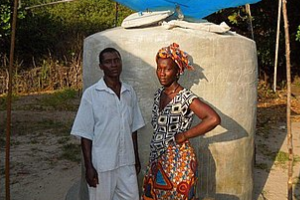 Rainwater harvesting in Guinee Bissau 2 | ||
Acknowledgements
Many of the tools, technologies, and projects on this page are courtesy of the Rainwater Harvesting Implementation Network.
RAIN is an international network with the aim to increase access to water for vulnerable sections of society in developing countries - women and children in particular - by collecting and storing rainwater.
Started in December 2003, RAIN focuses on field implementation of small-scale rainwater harvesting projects, capacity building of local organisations and knowledge exchange on rainwater harvesting on a global scale.
